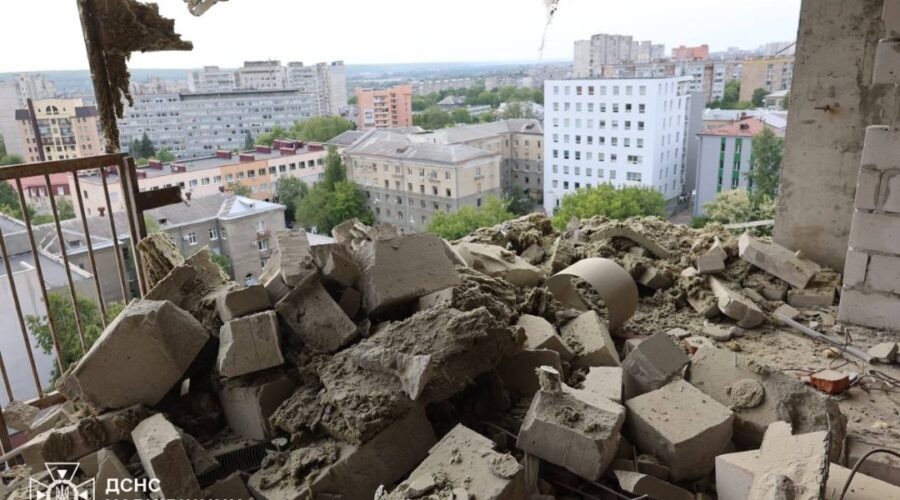The United States’ decision to provide military aid to Kyiv did not prevent Russia from launching an offensive aiming to capture parts of Ukraine’s Kharkiv region. The Kremlin reportedly hopes to create a buffer zone between the two countries in order to protect its western oblasts from Ukrainian shelling.
Although Russia wanted to take Kharkiv at the very start of its full-scale invasion of Ukraine in February 2022 – and its troops were even on the outskirts of the city – in September 2022 the Russian military lost nearly all of the territory it had gained in the wider Kharkiv region. It is now struggling to recapture strategically insignificant villages and towns near the Russian border.
Reports suggest that Russia has so far seized around 106 square kilometers (41 square miles) in the Kharkiv region. It seems to be a matter of time before its troops capture the border town of Vovchansk, and declare a “great victory”. But that will not mark the end of their cross-border offensive in the region.
Although Russian Foreign Minister Sergey Lavrov hinted on April 19 that the Kremlin plans to capture the city of Kharkiv, at this point Russia does not have enough manpower to achieve such an ambitious goal. According to Ukrainian military officials, Russia has deployed “significant forces” – up to five battalions – in its latest offensive. Battalions typically include up to about 1,000 soldiers. With 5,000 troops, Russia can never seize a city of around one million people. Not even 50,000 would be enough to launch such an operation.
Without Russia pouring in massive numbers of troops to fight – hundreds, rather than tens of thousands of soldiers – Kharkiv is not at risk of capture. What the Russian military can do, though, is to send reinforcements, aiming to move its forces within artillery range of the city of Kharkiv. If that is the goal of the Russian cross-border offensive, then the Kremlin’s actions in the Kharkiv oblast are driven purely by politics, and have very little to do with military strategy.
Given that Ukrainian forces attack the Russian city of Belgorod on a daily basis, it is entirely possible that the Kremlin wants to demonstrate that it can “respond” by shelling Kharkiv and making the Ukrainian second largest city unlivable. Such an approach likely aims to force Kyiv to make a behind-the-scenes deal with Moscow and refrain from attacking Belgorod, as well as other parts of western Russia.
In other words, the Kremlin is likely aiming to send a political message to Ukrainian leaders.
Ukrainian President Volodymyr Zelensky, however, claims that the Ukrainian Armed Forces see Russian activities in Ukraine’s northwestern Sumy and Chernihiv regions which, if true, indicates that Moscow plans to expand its buffer zone in Ukraine. But even if Russia succeeds, and creates a buffer zone of about 20-30 kilometers not only in the Kharkiv region but in other oblasts as well, that will not help the Kremlin achieve any of its strategic goals in Ukraine.
Initially, on February 24, 2022, Russian President Vladimir Putin launched the invasion of the neighboring country aiming to “demilitarize” and “denazify” it, and install a puppet pro-Russian government in Kyiv. A potential buffer zone in northeastern Ukraine would clearly show that Kyiv still has capacity to defend itself by attacking Russian territory. It would also mean that Ukraine has not been “demilitarized” and that the Kremlin has not achieved its top goal.
But given that Putin’s goals in Ukraine are very fluid, the Kremlin, through its propaganda, can always declare that the creation of the buffer zone, rather than “demilitarization and denazification” of Ukraine, has always been the major goal of its so-called special military operation in the Eastern European country.
If, however, Moscow plans to include Kharkiv in the buffer zone – which at this point seems improbable – it will have to mobilize a large number of troops, and implement its well-known military tactics of frontal assault on Ukrainian well-fortified positions. As a result, Russia will suffer colossal casualties, and Kharkiv will turn into another Bakhmut or Avdiivka. In the best case scenario, it could become “second Aleppo.”
Who would live in Kharkiv after its potential reconstruction remains unclear. But as NATO Secretary General Jens Stoltenberg stated, unless Ukraine prevails, there will be nothing to reconstruct.
The West will, however, almost certainly continue providing Ukraine with enough weapons to continue fighting, and is unlikely to allow the war-torn nation to collapse. The delayed aid from the United States, particularly in terms of artillery and artillery shells, has undoubtedly contributed to Ukraine’s relatively poor performances in the Kharkiv region, although that does not mean that the Ukrainian military cannot consolidate in 2025.
Meanwhile, the initiative is expected to remain on the Russian side, and its forces will continue making tactical gains in Ukraine.
Image: Main Directorate of the State Emergency Service of Ukraine in Kharkiv Oblast

